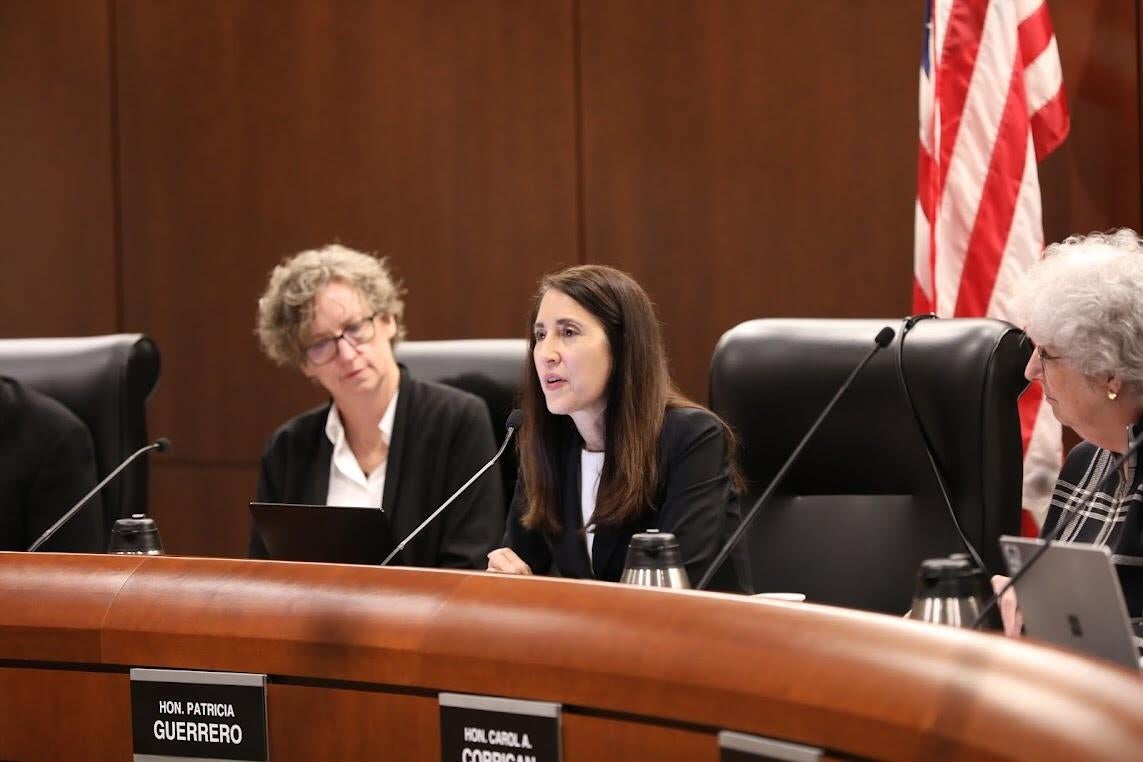Pilot Program to Address Court Interpreters Shortage
Interpreters help provide litigants with meaningful access to the justice system by ensuring they understand court proceedings and have a way to accurately communicate with the court.
To further increase language access to California courts, the state’s judicial branch recently launched a five-year pilot program to hire more court interpreter employees, dedicating $6.8 million in funding made available from the 2023 Budget Act.
“More than 200 languages and dialects are spoken in California,” said David Yamasaki, court executive officer for the Superior Court of Orange County, during an update on the program provided at the July 12 Judicial Council business meeting. “Without proper language assistance from court interpreters, limited-English-proficient court users may be excluded from meaningful participation in the court process."
How The Pilot Program Works
The Court Interpreter Workforce Pilot Program reimburses participants for costs associated with their training, coursework, and up to three examination fees. Candidates will have two years to pass all required exams and may apply to be in the next cohort if applicable. They must also submit six-month progress reports to the Judicial Council, agree to work for the courts for at least three years after passing all the required exams, and enroll with the Judicial Council as a court interpreter.
Twenty superior courts have signed up to participate in the program. Each court may have up to 10 candidates per year. As of Aug. 1 (the deadline for aspiring interpreters to apply for the first phase of the program), the 20 courts have collectively received 1,114 applications:
- 309 (27%) of the candidates are current court employees interested in becoming interpreters
- 805 (72%) are non-court employees
- 1,000 (90%) are fluent in Spanish, followed by Punjabi (2.2%)
Shortage of Court Interpreter Employees
California has the largest court interpreter workforce in the nation. However, the number of court interpreter employees has been decreasing in recent years—there were 799 court employees in 2021-22, compared to 717 in 2023-24.
In fiscal year 2022-23, Spanish was the most frequently interpreted language in courts, followed by Mandarin, Vietnamese, and Cantonese. The number of interpreted events in Spanish that year was 377,070, but only 1,310 Spanish interpreters were available, highlighting the urgent need for more interpreters.
The pilot program aims to help address the challenges courts are facing to mitigate the court interpreter shortage, including an aging and retiring interpreter workforce, geographic constraints limiting availability, and test capacity impacted by the pandemic.
“As the largest trial court in the nation, we serve a rich diversity of communities that speak over 200 languages,” said Presiding Judge Samantha P. Jessner of the Superior Court of Los Angeles County. “We embrace the opportunity to partner with newly certified and registered interpreters to show them firsthand the valuable and meaningful careers they can have in court interpreting. We look forward to mentoring them as they join our ranks and learn about the critical public service they can provide to non-English speakers seeking meaningful access to justice.”
In addition to participating in the state’s Court Interpreter Workforce Pilot Program, the Los Angeles Superior Court also launched its own in-house Interpreter Training Program that offers current court employees the opportunity to participate in on-the-job training to become a certified interpreter.
Next Steps
Information pertaining to cohort 2 and a list of participating courts will be available on the Court Interpreter Workforce Pilot Program webpage in the spring of 2025.


